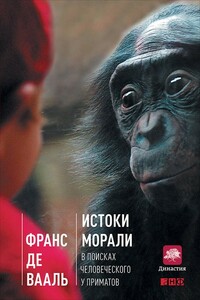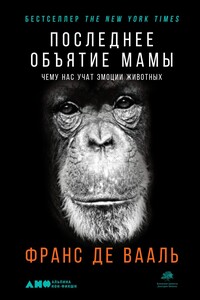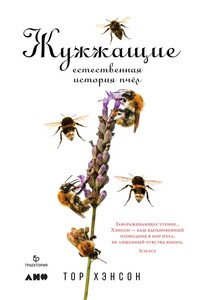Достаточно ли мы умны, чтобы судить об уме животных? - страница 147
Uchino, E., and S. Watanabe. 2014. Self-recognition in pigeons revisited. Journal of the Experimental Analysis of Behavior 102:327–34.
Udell, M. A. R., N. R. Dorey, and C. D. L. Wynne. 2008. Wolves outperform dogs in following human social cues. Animal Behaviour 76:1767–73.
–. 2010. What did domestication do to dogs? A new account of dogs' sensitivity to human actions. Biological Review 85:327–45.
Uexküll, J. von. 1909. Umwelt und Innenwelt der Tiere. Berlin: Springer.
–. 1957 [orig. 1934]. A stroll through the worlds of animals and men. A picture book of invisible worlds. In Instinctive Behavior, ed. C. Schiller, 5–80. London Methuen.
Vail, A. L., A. Manica, and R. Bshary. 2014. Fish choose appropriately when and with whom to collaborate. Current Biology 24: R791–93.
van de Waal, E., C. Borgeaud, and A. Whiten. 2013. Potent social learning and conformity shape a wild primate's foraging decisions. Science 340:483–85.
van Hooff, J. A. R. A. M. 1972. A comparative approach to the phylogeny of laughter and smiling. In Non-Verbal Communication, ed. R. A. Hinde, 209 – 41. Cambridge: Cambridge University Press.
van Leeuwen, E. J. C., K. A. Cronin, and D. B. M. Haun. 2014. A group-specific arbitrary tradition in chimpanzees (Pan troglodytes). Animal Cognition 17:1421–25.
van Leeuwen, E. J. C., and D. B. M. Haun. 2013. Conformity in nonhuman primates: Fad or fact? Evolution and Human Behavior 34:1–7.
van Schaik, C. P., L. Damerius, and K. Isler. 2013. Wild orangutan males plan and communicate their travel direction one day in advance. Plos ONE 8: e74896.
van Schaik, C. P., R. O. Deaner, and M. Y. Merrill. 1999. The conditions for tool use in primates: Implications for the evolution of material culture. Journal of Human Evolution 36:719–41.
Varki, A., and D. Brower. 2013. Denial: Self-Deception, False Beliefs, and the Origins of the Human Mind. New York: Twelve.
Vasconcelos, M., K. Hollis, E. Nowbahari, and A. Kacelnik. 2012. Pro-sociality without empathy. Biology Letters 8:910–12.
Vauclair, J. 1996. Animal Cognition: An Introduction to Modern Comparative Psychology. Cambridge, MA: Harvard University Press.
Visalberghi, E., and L. Limongelli. 1994. Lack of comprehension of cause-effect relations in tool-using capuchin monkeys (Cebus apella). Journal of Comparative Psychology 108:15–22.
Visser, I. N., et al. 2008. Antarctic peninsula killer whales (Orcinus orca) hunt seals and a penguin on f loating ice. Marine Mammal Science 24:225–34.
Wade, N. 2014. A Troublesome Inheritance: Genes, Race and Human History. New York: Penguin.
Wallace, A. R. 1869. Sir Charles Lyell on geological climates and the origin of species. Quarterly Review 126:359–94.
Wascher, C. A. F., and T. Bugnyar. 2013. Behavioral responses to inequity in reward distribution and working effort in crows and ravens. Plos ONE 8: e56885.
Wasserman, E. A. 1993. Comparative cognition: Beginning the second century of the study of animal intelligence. Psychological Bulletin 113:211–28.
Watanabe, A., U. Grodzinski, and N. S. Clayton. 2014. Western scrub-jays allocate longer observation time to more valuable information. Animal Cognition 17:859–67.
Watson, S. K., et al. 2015. Vocal learning in the functionally referential food grunts of chimpanzees. Current Biology 25:1–5.
Weir, A. A., J. Chappell, and A. Kacelnik. 2002. Shaping of hooks in New Caledonian crows. Science 297:981–81
Wellman, H. M., A. T. Phillips, and T. Rodriguez. 2000. Young children's understanding of perception, desire, and emotion. Child Development 71: 895–912.
Wheeler, B. C., and J. Fischer. 2012. Functionally referential signals: A promising paradigm whose time has passed. Evolutionary Anthropology 21:195–205.
White, L. A. 1959. The Evolution of Culture. New York: McGraw-Hill. Whitehead, H., and L. Rendell. 2015. The Cultural Lives of Whales and Dolphins. Chicago: University of Chicago Press.
Whiten, A., V. Horner, and F. B. M. de Waal. 2005. Conformity to cultural norms of tool use in chimpanzees.







